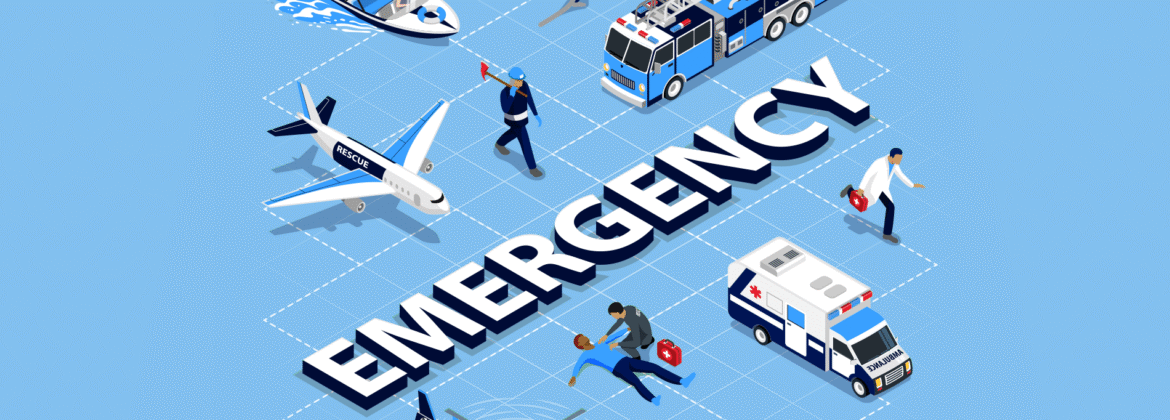Call anytime

30
Aug
The timely ambulance services determine the life of a victim during emergencies. Fast response means fast medical attention, minimization of complications, and the increase of survival chances.
What is so important about timely ambulance services?
In the event of an emergency such as a heart attack, accident, or stroke, there are no spare minutes to give. Prompt ambulance serves are essential due to on-time medical assistance prior to arrival at the hospital. Prevention of complications, and in most cases saving lives, occurs with early care that minimizes the fall and deterioration.
Delay in an ambulance can aggravate problems of severe bleeding, respiratory problems, or a heart attack. Research indicates that there is a severe decrease in the survival rates when emergency response time is more than 8-10 minutes in cases that are critical.
This is the reason that when dealing with proper emergency medical services, speed and quality of care are considered first.
Modern ambulance systems use GPS tracking, online booking, and trained paramedics to improve response time. These advancements make state-of-the-art ambulances essential in healthcare. They play a major role in improving patient outcomes.
For more details click Here
Advantages of Ambulance Services
The greatest benefit of prompt ambulance services is that the treatment process begins early. Paying forward the concept of day ambulances, advanced life-saving devices such as oxygen cylinders, ventilators, ECG monitors, and defibrillators are jammed into many ambulances today.
Along with prescribing CPR, administering CPR by paramedics, fracture stabilization, and hemorrhage control may be carried out before the hospital visit.
In cardiac or stroke patients, it is imperative to intervene within the golden hour in order to eliminate permanent damage. Other benefits of quick ambulance services to trauma patients include helping them to survive by reducing shock and excessive blood loss.
Timely transport helps hospitals get early information about emergency surgery or treatment. This allows them to prepare in advance. Such coordination reduces waiting time on arrival. Quick ambulance services become a vital link in the emergency healthcare chain.
What is the importance of ambulance services on time during medical emergency conditions?
An emergency ambulance is mandatory because it helps to fill the difference between the moment of an event and the treatment at the hospital. The time the patient remains in any unfortunate situation, such as accidents, heart attacks, or strokes, can go by with his condition deteriorating with each passing minute.
Most of them cannot survive without on-the-spot medical attention.
As an example, when there is cardiac arrest, brain cells begin dying four minutes after oxygen inadequacy. When the ambulance arrives on time, then paramedics can give CPR, oxygen, and stabilize the patient in the ambulance.
In the same way, stroke patients need immediate drugs to reactivate the flow of blood to parts of the brain to avoid permanent disability.
Complicating this problem scenario is the delay in the delivery of ambulances, which creates subsequent risks of organ failure, brain damage, and death. Such lends credence to why the healthcare systems all over the world are interested in cutting the response time. When you select a reputable service that believes in speed, you stand a high probability of achieving a favorable outcome to the emergency.
For more details click Here
What role do timely ambulance services play in improving the survival rates of patients?
The connection between the survival rate and the timeliness of ambulance services has been there to deny. It places outreach in time so that life-saving measures such as oxygen therapy, bleeding control, and cardiac support become a possibility before arriving in a hospital. It is these first several minutes that are commonly termed the gold hour in trauma patients and as the critical window in cases of heart attack and stroke.
By reducing the time elapsed to reach the definitive care, paramedics have time to begin treatment on the way. Useful case in point, patients who have heart attacks can unanimously gain early oxygenation and be monitored to reduce sudden cardiac arrest.
Likewise, patients with stroke develop better recovery without extreme disability severity when the treatment is administered within an hour of the onset.
Zip transit will also ensure that hospitals are ready to administer care instantly to minimize delay in receiving a patient. Thus, the ambulance is not a form of convenience on time; It is a central part of emergency medical care that has a direct impact on existence.
For more details click Here
What problems impact timely ambulance services?
Factors that may lead to delay of the ambulance services arriving on time include congested traffic, distances to locations, an inadequate number of ambulances, and poor coordination of the dispatch teams.
Congested roads tend to impede the progress of an ambulance in an urban setting, and this happens even when the ambulance has its siren on and flashing emergency lights.
Due to the location, issues of availability of ambulances and long distances to health care facilities affect rural areas and remote areas more. Response times may also be lengthened by weather conditions such as floods or snow. Moreover, the wrong location information provided by the callers gives rise to confusion and wastage of time.
To address these difficulties, advanced systems have introduced GPS-based directions, online booking systems, and pre-hospital integration with the hospitals. These innovations facilitate optimization, and the nearest ambulance should attend the patient.
Nevertheless, it is also important that people are informed about the importance of giving proper location information and calling official numbers to guarantee prompt ambulances.
For more details click Here
What can we do to use technology to improve timely ambulance services?
Technology is a revolution in the provision of an on-time ambulance service. The GPS navigation can aid a driver in selecting the quickest paths by bypassing traffic jams. The automatic distribution of available ambulances to the closest dispatch point could be reduced by dispatch systems that are run on AI.
Mobile applications can be used to make an online booking of ambulances so that a patient or a caregiver can request immediate assistance, provide real-world locations, and can monitor the ambulance’s progress to get real-time information. Such clarity accelerates the speed of the process and establishes trust. Furthermore, instant communication between the ambulances and the hospitals makes sure that the emergency rooms are prepared prior to the patient’s entrance.
Certain ambulances are fitted with telemedicine equipment, as a result of which doctors can provide paramedics with their guidance even when they are not with them. This is a critically important feature to deliver life-saving means in the course of transit. In short, technology has become a fundamental component for an emergency care system as it results in rapid response, effective communication, and increased patient outcomes.
For more details click Here
FAQs
Why are timely ambulances necessary?
Since immediate action mitigates risks and maximizes chances of survival in times of emergency, quick response is desirable in emergencies.
How long should the ambulance respond?
Ideally, in emergency situations in less than 8 minutes, which are important such as heart arrest or trauma.
Is it possible to book an ambulance during an online emergency?
The number of services that offer online booking and real-time monitoring to offer quicker turnaround time is large.
Are ambulances used to treat in transit?
They provide basic and advanced life support, i.e., oxygen and CPR.
What can I do to increase the speed of the ambulance?
Call on official helplines or use trusted applications, give proper details of the location, and keep your phone handy so as to coordinate.
Conclusion
Ambulance services, when provided punctually, are the pillar of any emergency healthcare. They offer immediate response and life-saving care, and fast transportation to the hospitals. At that, we can make such services more effective with the help of technology and proper coordination. Emergencies would not be informed enough without the ambulance services in cases of life and death.
For more details click Here

Leave A Comment